ON THIS PAGE:
- An introduction to Pilgrimage and the journeys that I have led
- The talks I gave in the Holy Land, following St Paul in Greece, Sinai & Jordan, Puglia and Armenia, and information about Médard’s Journey – the talks I gave en route to Santiago de Compostella
- Finding God Through Travel, an Address given at St John’s College, Cambridge
- The complete list of the pilgrimages I have led over 30 years
A competent, devout and very caring man, who manages nicely to control a group, is good at timekeeping and gives excellent talks. Oberammergau Pilgrim, 2000
A PILGRIMAGE is a journey of faith, and leading an annual pilgrimage has been an important part of my ministry. A pilgrimage may be to a holy place, like the Holy Land, or to a shrine associated with the life of a saint, like Lourdes in south-west France, or it may follow a sacred way, like the many paths to Santiago de Compostella in north-west Spain. Whatever its nature the goal is to deepen faith, to learn from those who have walked before us in the Way, and to discover anew the Spirit who dwells in our hearts.
Many people travel today, but most travel as tourists. Tourist go to view, generally remaining outside the local situation; their purpose is enjoyment, not spiritual growth; they have come not to serve, but to be served; generally not to learn, but to acquire, consuming disproportionally local resources. Tourists are the subject, those visited are the object. In a journey of faith these roles are reversed: we are the object, God is the subject. We travel in order to become part of where He is, and not to remain outside as a voyeur. Although pilgrims do many of the same things as tourists, and enjoy themselves as they travel, the purpose of the journey is spiritual growth, and it those who travel who must expend their resources if this purpose is to be achieved. At the end of this page is a talk I gave in 2008 about finding God in travel.
I led my first pilgrimage in 1989, and since then I have led a pilgrimage more or less annually – the list is given below, and two of the most recent, to Bari in Puglia for the Festival of the St Nicholas (April/May 2017), and to Armenia (September 2018), are described below. The 2019 pilgrimage from Arles to Santiago de Compostella, marked 30 years of leading pilgrimages, and was the last one that I shall organise.
However, I will continue to lead shorter events like the retreats at Tournay Abbey in the Midi-Pyrenees. The retreats planned for 2025 are listed on the Retreats Page. If you would like to receive the details when they are available please contact me: click here.
The complete list of pilgrimages that I have led is given at the end of this page, preceded by a brief description of the types of journeys that I have made.
PREVIOUS JOURNEYS
JESUS & PAUL
My first pilgrimage in 1989 followed in the footsteps of Jesus in the Holy Land, and since then I have led two further pilgrimages to the Holy Land. I have followed St Paul on his journeys through Greece, Turkey and Cyprus, visiting almost all the ‘Pauline places’. The talks I gave in the Holy Land, Let Him Who Is Thirsty Come, and those following St Paul, The Life Hidden With Christ in God, are available to download (see below).
Other biblically-themed journeys have been to the the Seven Churches of Asia (in the Book of Revelation), and following route of the Exodus through Sinai and Jordan (see below for the talks I gave on this journey). In 2000 and 2010 I led a group to the Passion Play in Oberammergau – the script had been revised between in the intervening years with very different presentations of Judas Iscariot and Pontius Pilate. It was interesting to experience the two versions, both unique and moving experiences.
IN THE STEPS OF THE SAINTS
Several pilgrimages have focussed on the lives of the saints: St Benedict and St Francis in Italy (2003), St Teresa of Avila & St John of the Cross in Spain (2007), and, in 2015, following the final journey of the Czech martyr Jan Hus from Prague to Konstanz (2015) marking the 600th anniversary of his martyrdom).
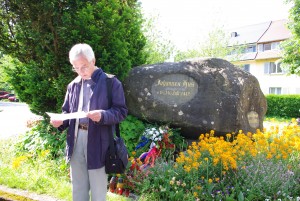
Prayers at the memorial to Jan Hus
at the site of his martyrdom in Konstanz
PILGRIMAGE TO BARI 2018
The 2017 pilgrimage was to the Festival of St Nicholas in Bari. Bari is the destination of an annual pilgrimage, whose origins go back to the early Middle Ages. As we made our way we reflected on the life and miracles of St Nicholas; we experienced some of the special places in Puglia, like Matera and Alberobello (both World Heritage sites), and worshipped with the local Church. The culmination was the three-day Festa San Nicola, which concluded with the Mass of the Holy Manna, a wonderful, joyful service in the Basilica San Nicola – it was a special and unique experience. Each day we had a time of worship together, and I gave a series of talks, To Possess the Holy, about St Nicholas, his life and the translation of his relics. If you’d like to read the talks you can download them here: To Possess the Holy
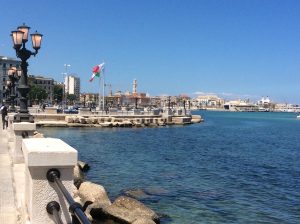
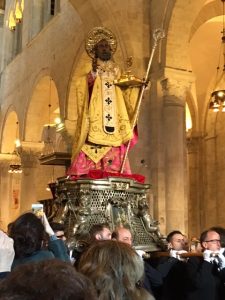
Bari Harbour St Nicolas in procession
PILGRIMAGE TO ARMENIA 2018
The pilgrimage to Armenia, the first country to adopt Christianity as its religion (in AD 301), was a deep experience. Christianity has shaped the land, and its legacy is seen in its many monasteries and churches, and in the values by which the ordinary people live. It stands out as an extraordinarily safe and hospitable country. Its faith has been tested by many adversities, above all in the Genocide of 1915, but it remains strong. Historically, it was the location of Mount Ararat, where, according to Genesis, Noah’s Ark came to rest; the mountain is now in Turkey and inaccessible from Armenia.
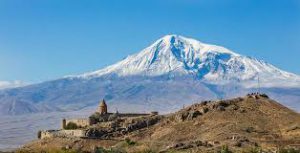 Mount Ararat & Khor Virap Monastery
Mount Ararat & Khor Virap Monastery
The journey prompted me to ask what it means to adopt Christianity as a religion if it is to be a part of our identity and not merely a badge to mark us out from others, and during the pilgrimage I offered a series of Reflections on this theme, which can be downloaded here: Being Christian. (To order a print copy (£3) please contact me here.
SANTIAGO DE COMPOSTELA
The Camino, or Way of St James, is perhaps the best known pilgrimage route today. The Camino draws as many pilgrims today, maybe more, as it did in the Middle Ages, following its designation in 1987 as the first European Cultural Route. Arriving in Santiago in for the first time was like my first sight of Jerusalem. As well as following the Camino Francés through northern Spain, I have also followed the Camino Portuguès from Lisbon, and all four of the French pilgrim routes: the Via Lemovicensis from Vézelay; the Voie des Plantagenêts from Mont St-Michel; the Via Podiensis from Le Puy-en-Velay; and the Via Tolosana from Arles.
 Santiago: The Cathedral of St James
Santiago: The Cathedral of St James
The talks that I gave on the Via Podiensis in 2014 and the Via Tolosana in 2019 have been published as Médard’s Journey; details are given below.
HERITAGE & CULTURE
Pilgrimage is also a way of exploring Christian heritage and culture. Asia Minor, now modern Turkey, was an important cradle of Christianity, and on two journeys I visited some of the places where early Christian communities were founded –
The Seven Churches of Asia in 1994, down the west coast, and Cappadocia in 2001, along the ‘Turquoise Coast’ from Antioch, via Tarsus to Myra. The ancient rock churches of Cappadocia, unchanged from when they were hewn out of the cliffs, containing some astonishingly beautiful frescoes, transports you back to another world. Celebrating the Eucharist literally on the same ground as the first Christians brings the Early Church alive.
Syria, which I was fortunate to visit in 2009, not long before the civil war engulfed the country, is not only the place where St Paul was baptised, but also contains some important early Christian locations as well as the better-known classical sites.
Andalusia in 2005, gave the opportunity to think about Christian/Muslim relations. Visiting Cordoba and Granada shows you a different face of Islam to that of Al Khaida and today’s militants, as it reminds you of the Islamic achievements in science and the arts.
A Baltic Journey in 2006 took us to Riga and Tallinn, both beautiful cities, each with its distinctive culture. Latvia and Estonia had not long emerged from Soviet rule, and the aftermath of living under oppressive regimes was the theme of the journey. As we learnt about the history of occupation, first under the Nazis and then under the Communists, we learnt also about the strength of the human spirit and the enduring nature of hope. My reflection on the experience can be read in my booklet, Your Kingdom Come (page 34), which can be accessed on the books page.
PILGRIMAGE TALKS
On my pilgrimages I give a connected series of talks, some of which have been published. To buy a copy of those available only in print, please contact me here.
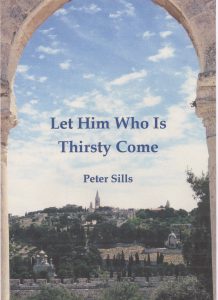 Let Him Who is Thirsty Come – a set of meditations that I gave on the first pilgrimage I led to the Holy Land in 1989. While the talks were related to the places that we visited, they also stand alone as reflections on the Christian life and faith. Topics include the birth, ministry and resurrection of Jesus; Mary, the Church, forgiveness and discipleship. Read now. (Print copy £3.)
Let Him Who is Thirsty Come – a set of meditations that I gave on the first pilgrimage I led to the Holy Land in 1989. While the talks were related to the places that we visited, they also stand alone as reflections on the Christian life and faith. Topics include the birth, ministry and resurrection of Jesus; Mary, the Church, forgiveness and discipleship. Read now. (Print copy £3.)
The Life Hidden with Christ in God – A series of eleven talks following the journey of St Paul through Greece (now published as a Lent Course and featured on the Books page).
Exodus – The story of the Exodus is one of the most dramatic in the Bible.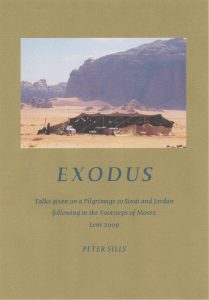 It is also one of the most violent, bringing in its train widespread suffering. This series of talks, given on pilgrimage to Sinai and Jordan following in the footsteps of Moses, reflects on the some of the questions that the story raises for Christians today: Did it happen as the Bible relates? Is the picture of God that it presents compatible with that revealed by Jesus of Nazareth? What do we learn from the story about the continuing conflict in the Middle East, the origins of which can be traced back to the Exodus, and to the understanding of God that justified it? Read now. ((Print copy £4.)
It is also one of the most violent, bringing in its train widespread suffering. This series of talks, given on pilgrimage to Sinai and Jordan following in the footsteps of Moses, reflects on the some of the questions that the story raises for Christians today: Did it happen as the Bible relates? Is the picture of God that it presents compatible with that revealed by Jesus of Nazareth? What do we learn from the story about the continuing conflict in the Middle East, the origins of which can be traced back to the Exodus, and to the understanding of God that justified it? Read now. ((Print copy £4.)
To Possess the Holy – The story of St Nicholas of Myra and the Translation of his Relics to Bari. Read now. (Print copy £3.)
Being Christian – The Faith of Armenia and what it means to be a Christian. Read now.
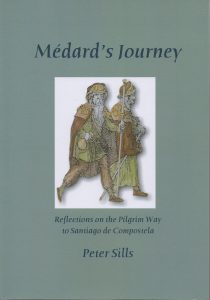 Médard’s Journey – The ancient pilgrim way to Santiago de Compostela is one of the most frequently walked pilgrim paths in the world, and for those who follow it the journey provides a time of personal spiritual reflection. Some will simply be curious about the churches and monasteries en route, others will find their interest engaged at a deeper level, and they will soon realise that the architecture and decoration of the these religious places draws them into a different world, where religious concerns dominated life, and encounters with saints and demons were everyday experiences.
Médard’s Journey – The ancient pilgrim way to Santiago de Compostela is one of the most frequently walked pilgrim paths in the world, and for those who follow it the journey provides a time of personal spiritual reflection. Some will simply be curious about the churches and monasteries en route, others will find their interest engaged at a deeper level, and they will soon realise that the architecture and decoration of the these religious places draws them into a different world, where religious concerns dominated life, and encounters with saints and demons were everyday experiences.
Médard’s Journey explores that different world through the journeys of two French medieval pilgrims at the turn of the C12th, Médard de La Chaise Dieu, a wool merchant, who made the pilgrimage from Le Puy en Velay, and Robert Le Chêne, Under-Steward to the Vicompte Beaucaire, who made the journey from Arles. Through their encounters and the places they visit we explore their reasons for making the pilgrimage and what they learn about themselves and the spiritual life. The story offers modern pilgrims food for thought as they make their own spiritual journey, whether travelling the pilgrim way, or in their own homes.
Médard’s Journey is illustrated, and is available in the printed version only. To order a copy (£12 + £2 p&p) contact me here.
‘Like a good novel, I did not want the story to end.’ – Elizabeth Tipton
Matthew Lavis, a pilgrim on both journeys, writes:
Conceived from two pilgrimages following the routes from Le Puy-en-Velay and Arles, Médard’s Journey is of particular interest to those following the Santiago route from Le Puy or Arles, but the book is about pilgrimage more generally: both the ‘outward physical journey and the inward spiritual journey’.
It is structured in short sections reflecting the stages of the pilgrimage. Each section is used to focus on issues such as saints and relics, indulgences, prayer, faith, through to contemporary challenges in living a spiritual life, and is prefaced by well chosen biblical readings.
The narrative is in three strands plaited together. The main theme, folllowing the journeys of Médard and Robert, alludes skilfully to the practical tasks and difficulties they face as well as exploring the spiritual issues that are prompted by the people they encounter and the churches they visit. Through the eyes and contemporary beliefs of the medieval pilgrims we are led to reflect on the teaching in stone displayed in the carvings, particularly the tympanums, of the Romanesque churches. The second strand comprises sections outlining the origin and evolution of the customs and practices of pilgrimage. In the third and most challenging strand, a series of postscripts explore historical and theological issues and relates them to present day moral and spiritual questions. Here the reader benefits from Peter Sills’ many years of spiritual leadership.
Together the strands form an interesting, informative and thought-provoking pilgrims’ tale. Both Médard and Robert are asked what they seek from the pilgrimage: both the physical and spiritual journey.This book poses the same question and challenge for us today.
FINDING GOD THROUGH TRAVEL
An Address given at St John’s College, Cambridge (27.01.08)
It wasn’t a difficult journey, but it was wet, and we arrived soaked. It was January 1988, twenty years ago almost to the day; my first visit to Jerusalem. From the Upper Room we walked along the empty streets of the Jewish Quarter, the white paving stones glistening in the rain. Leaving the houses behind us, we descended the steep slope of the Kidron Valley, then up the other side to the Garden of Gethsemane and the Church of All Nations. It was the route that Jesus took after the Last Supper, and it is an experience I will not forget. The Church of All Nations marks the place where Jesus waited before his betrayal. In the centre of the church is a large rock, the Rock of the Agony, revered as the very place where Jesus threw himself to the ground and prayed: ‘Abba, Father, all things are possible to you; take this cup from me. Yet not my will but yours.’ The place is charged with emotion, and kneeling around that rock, I knew, in a way I had not known before, that Jesus had died for me. And I wept.
God is everywhere, but it some places his presence is more closely felt, and travelling on pilgrimage to those places where, as T S Eliot put it, ‘prayer has been valid,’ is to find the God who touches and changes our lives. Time and again the Bible pictures finding God as a personal encounter, as in the call of Abram. God addresses him personally: ‘Leave your own country, your kin and your father’s house, and go to a country that I will show you.’ So he set out from Harran and journeyed to Canaan. The same happened to Moses at the Burning Bush, to Jacob at the River Jabbok, to Paul on the road to Damascus, to Francis in the Church of San Damiano in Assisi. In the same way, visiting the places made holy by these encounters, God draws near to us, and touches our lives. To walk to Gethsemane with Jesus and the disciples, to climb the Areopagus in Athens like St Paul, to stand in the cell where St Benedict wrote his Rule, to kneel where St Francis died, is to do more than just remember, it is to let the story come alive, it is to enter into the event and re-live it with all its power to move us and change us.
More than this, it changes the way we think about God. My first visit to Israel in 1988 was the first time I had been in a non-Christian country. It was strange to be in a minority as a Christian and to have my faith challenged by the other children of Abraham, the Jews and the Muslims. In the El Asqa mosque on the Temple Mount in Jerusalem I encountered a silence that had a depth and a reverence seldom found in our English churches. On another day, at Sede Boqer, on the edge of the Negev Desert, two Jewish girls were praying at the tomb of David Ben Gurion: a simple act of devotion that touched me and moved me. Experiences like this make it hard, I find, to write off Jew and Muslim as simply wrong or misguided. But this has not meant a weakening of my Christian faith; rather the reverse. Coming close to those faithful to another way has strengthened me in my way. I still find in Jesus the most compelling picture of God, but at the same time I find myself better able to relate to those who see things differently.
Reaching out to others requires us to be firmly rooted, otherwise we fall over. It seems to me that the trouble we have with multi-culturalism, indeed why we invented the idea, is precisely because we don’t know who we are and what we believe – in a word, because we are rootless. Pilgrimage both deepens our roots and deepens our appreciation of other cultures. We find the God who transcends the faiths.
Pilgrims also follow in the steps of the saints like St Paul, and this also is a deepening experience. St Paul is not everyone’s favourite, but re-tracing his journeys I find my admiration for him and for what he achieved grows. Its not just the distances that he travelled, nor the hardships he endured, nor his resilience in the face of adversity, but the way he took the situations he faced and used them to proclaim the Christian faith. In Athens he sees an altar to an unknown God and uses it to proclaim Christ and him crucified – and he does this with confidence in front of the Athenian religious establishment! In Corinth he sees the way the church is split into factions, and that inspires not only the great Hymn to Love (1 Cor 13), but also the wonderful organic image of the Church as Body of Christ, in which each member has a distinctive part to play, which has had such a radical effect on the way we understand the Church today. Again in Corinth, appalled by the widespread practice of sacred prostitution – it is said that the Temple of Aphrodite was served by 1000 priestess-prostitutes – he speaks of the human body as the Temple of the Holy Spirit. Promiscuity and sexual licence – union without love – has spiritual consequences, he says, an inner corruption that affects more than our love life, as the AIDS generation knows to its cost. Travelling we find the wisdom of God addressing us across the centuries.
Paul, Benedict, Francis, Teresa, John of the Cross … were no plaster saints, but fallible humans with all-too human faults, but God used them. As St Teresa of Avila said, God does not demand a perfect work, but an infinite desire. Travelling with the saints we find the God who will work through us also; his grace transcends our faults and our limitations and our fallibility, and enables our desire, so that we too might become his fellow-workers.
Almost any human encounter, any human journey, has this potential to reveal God, to speak to us and touch us in our depths. We have all, I imagine, at some time enjoyed the companionship of others on a journey, been enthralled by new experiences, or been moved by the beauty of nature – the glory of the sunset, the might of waves, the majesty of mountains, the mystery of the night sky, but all too often, again as T S Eliot said, ‘we had the experience but missed the meaning.’ Grasping the meaning depends on how we travel: Do we travel as tourists, or as pilgrims? As tourists we go to view; we remain outside the local situation; we are the subject, those we visit the object. Our purpose is enjoyment. As pilgrims these roles are reversed: we are the object, those whom we visit are the subject. We go to learn from them and to share their lives. There is, of course, enjoyment in pilgrimage, but our purpose is spiritual growth.
The pilgrim knows that God is not to be discovered by sitting still. We say, ‘I know where I stand!’ Well, God is not interested in where we stand but in where we are moving, and to move is to change and grow. The Bible pictures God as the One who is not so much above, as ahead, calling us to follow, to transcend ourselves; and much of the Biblical story is about journeys. The story of Abraham is one such. When we meet him his name is Abram, which means ‘high father’; he is a local chieftan. Obeying the call of God he sets out to seek his destiny, and at the end of his journey, when he has reached the promised land, he is given a new name: ‘Abraham’, which means ‘father of many nations.’ In Hebrew understanding, a name called forth a particular identity or character; so changing your name changed who you were, and the way you understood yourself. Destiny and identity are bound together. So it was for Abraham; travelling faithfully he found God, and he also found his true self. The same happened to Simon who became Peter, and to Saul who became Paul. In the same way countless thousands have found that on the road to Jerusalem, to Santiago de Compostella, to Canterbury… , to wherever prayer has been valid, not only have they found God, they have also found their true selves. And this is to encounter God in the depths of our own heart. To him be the glory, now and for ever. Amen.
THIRTY YEARS OF PILGRIMAGE
1989 Holy Land
1990 St Paul in Greece
1992 (1) Holy Land | (2) St Paul in Greece – From Kavalla to Corinth
1994 The Seven Churches of Asia
1995 Cathedrals & Abbeys of Northern France
1996 Cyprus – Following St Paul & St Barnabas
1997 Holy Land
1998 Sinai & Jordan – In the Footsteps of Moses
2000 Oberammergau Passion Play
2001 Cappadocia – The Cradle of Christianity
2002 Burgos to Santiago de Compostella – Camino Francés
2003 Umbria – In the Steps of St Benedict & St Francis
2004 St Paul in Greece – From Kavalla to Corinth
2005 Andalucia – Exploring the Christian and Muslim legacy
2006 Riga & Tallin – A Baltic Journey
2007 The Heart of Spain – St Teresa of Avila & St John of the Cross
2008 From Vézelay to Tournay – Via Lemovicenis
2009 (1) Sinai & Jordan | (2) Normandy | (3) Christian & Classical Syria
2010 Oberammergau Passion Play
2011 Voie des Plantaganêts – Mont-St-Michel to Bordeaux
2012 Time Out in Tournay
2013 Camino Portugués – Lisbon to Santiago
2014 Via Podiensis – Le Puy-en-Velay to St-Jean-Pied-de-Port
2015 (1) In the Steps of Jan Hus – Prague to Konstanz | (2) Time Out in Tournay
2017 Puglia & Bari – St Nicholas Pilgrimage
2018 Armenia – The First Christian Country
2019 (1) Ethiopia | (2) Via Tolosana/Camino Francés – Arles to Santiago
